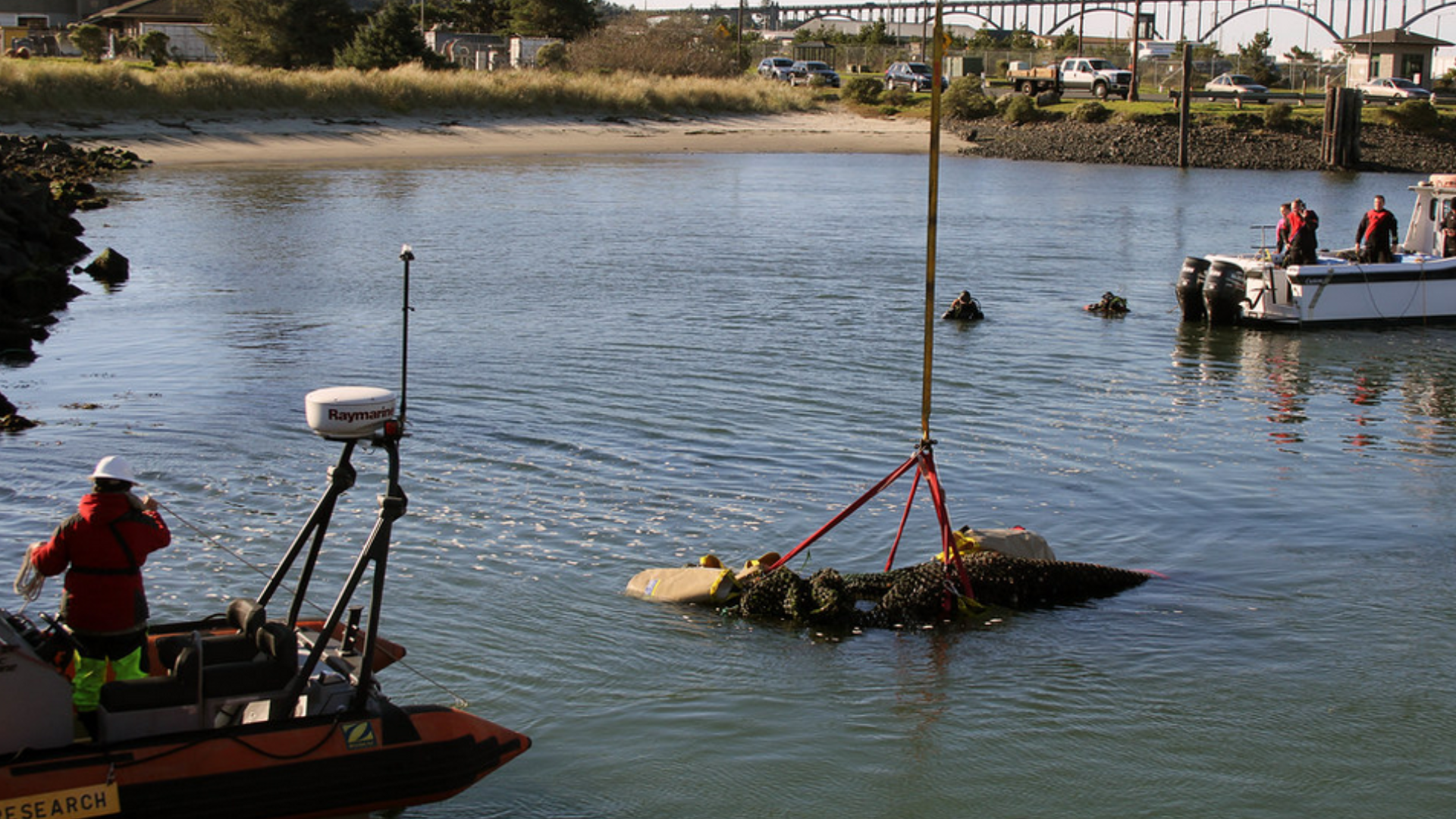NEWPORT, Ore. — After more than three years of rest in the Yaquina Bay in Newport, the skeleton of a 78-foot blue whale was brought back to dry land
this week so it can be preserved and prepared for a public display.
With the help of a team of divers and a crane company, the whale’s 6,500-lb. skull, 18-foot mandibles and several large net bags full of vertebrae and other bones were hoisted out of the water Thursday.
The whale carcass originally washed ashore near Gold Beach, Oregon in November 2015. A blue whale washing ashore in Oregon is very rare, said Bruce Mate, emeritus director of Oregon State University’s Marine Mammal Institute.
In fact, until the 2015 event, there hadn’t been a documented case of a blue whale beached in Oregon since Lewis and Clark made their historic journey to the coast more than 200 years ago. They saw Native Americans salvaging edible parts from a blue whale, Mate said.
Researchers from the Marine Mammal Institute saw the carcass as an opportunity for study and public education. After examining and dismantling the carcass, including removing about 58 tons of flesh, researchers bundled the skeleton in huge nets and submerged them in Yaquina Bay, weighing them down and allowing nature to run its course by having scavengers clean the bones. They were in the water for more than three years.
“We’ve got a bunch of work to do to get everything cleaned up,” Mate said.
“It’s critical to get the oil out of the bones to help preserve the skeleton and keep it from becoming rancid.”
Mate has some expertise in the process: He oversaw the graduate student preservation project of a 30-foot minke whale some 40 years ago. It's now hanging outside of the Guin Library at the Hatfield Marine Science Center.
“It’s holding up very well,” Mate said.
Once the bones are ready, the skeleton will be reassembled and go on display at the new marine studies building under construction at the Hatfield Marine Science Center. Mate said he expects the process of cleaning, preserving and putting the blue whale skeleton on display to take about a year.

